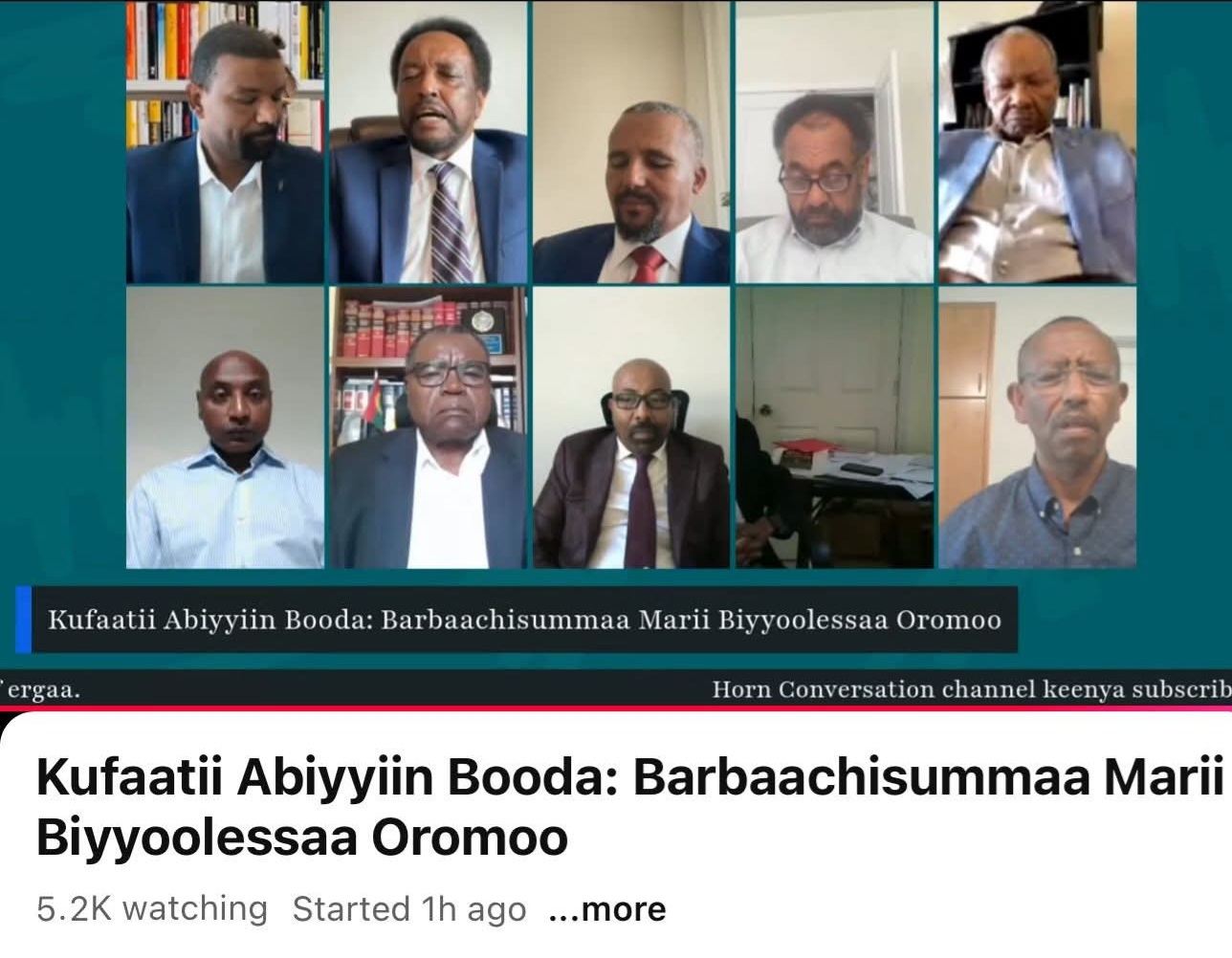Op-Ed: Ethiopia’s Inevitable Transition—Who Will Seize the Moment?
By Habtamu Nini Abino
Two years ago, during the height of the conflict between Prime Minister Abiy Ahmed and the Tigray People's Liberation Front (TPLF), the Oromo Liberation Army (OLA) entered a tactical alliance with the TPLF and other opposition forces. Their shared goal was to remove Abiy from power. The agreement was born out of mutual interest, not ideological alignment.
However, when the TPLF advanced toward central Ethiopia and threatened to cross into Oromia, the OLA and the Oromo Liberation Front (OLF) issued a surprising and powerful statement: “TPLF forces should not enter the borders of Oromia.” It was a moment of clarity that gave many of us hope. Yet, this statement did not stop the TPLF from reaching Addis Ababa—it was the reality of power. The TPLF lacked the strength, Western diplomatic backing, and technological superiority. Abiy’s drone warfare halted their momentum.
A New Conversation: What Comes After Abiy?
Recently, a new public discourse has emerged: What comes after Abiy? Scholars, politicians, and the general public are now asking the vital question: What would a post-Abiy Ethiopia look like?
This conversation has not gone unnoticed by the regime. From internet shutdowns to speeches in Parliament and cabinet-level warnings, it is clear that the government sees this discussion as a direct threat. But such discussions are not threats—they are essential. They assume something we all sense but rarely admit: Abiy's political fall is now within possibility.
Jawar Mohammed recently framed the potential collapse of Abiy’s rule with striking clarity: 60% Abiy himself, 30% economic collapse, and 10% organised political resistance. That final 10% includes widespread protests and all organised political and armed forces—OLA, OLF, Oromo Federalist Congress (OFC), Fanno, TPLF, Amhara militias, etc. External actors, while not quantified, undoubtedly remain a decisive factor.
Who Will Control the Transition?
This brings us to the most critical question: Who will hijack the transition this time? History is full of lessons.
- When Haile Selassie fell, the Derg military junta hijacked the transition and ruled with an iron fist for 17 years, sidelining the popular forces that brought him down.
- When the Derg fell, the TPLF emerged as the most organised force, taking power and shaping Ethiopia's political architecture for nearly three decades.
- In 2018, when the TPLF's dominance crumbled under popular pressure, the OPDO, later rebranded under Abiy's Prosperity Party, hijacked the moment.
The most organised and militarily powerful faction took control each time, often ignoring democratic voices and marginalising allied groups once the dust settled.
So we must ask: Who will hijack the next transition? Will it be an internal democratic coalition or an opportunistic foreign-backed faction? That answer depends on what happens today, not tomorrow.
Time to Prepare: Strength, Strategy, and Alliances
The time to prepare is now. Oromo political forces—armed or civic, traditional or progressive—must be unified, focused, and strategically aligned. We must define:
- Who are our allies?
- What strength are we building?
- What vision do we offer beyond resistance?
Transitions are rarely shared voluntarily. They are seized. Unless Oromo forces and others committed to justice prepare their strategy and institutions today, they risk being excluded again.
What If Another War Breaks Out?
The stakes grow higher by the day. Rumours of renewed war involving Eritrea, the TPLF, and the federal government have intensified. If such a war erupts, Oromo political movements face a dangerous decision:
- Should they side with Abiy’s government?
- Should they align with TPLF and Eritrean forces to topple him?
- Or should they chart an independent path that protects Oromo interests and national stability?
Each of these choices carries consequences. And silence or indecision is also a choice that history may not forgive.
Final Thought: From Resistance to Responsibility
The fall of Abiy Ahmed—if and when it comes—will not automatically yield democracy or justice. That requires organised, principled, and visionary forces ready to act with unity and clarity. Ethiopia’s transitions are often hijacked because power fills a vacuum faster than principle.
So let us talk—not just about the fall of a regime but about the birth of a new political order. Let us ask, “Who will fall?” and “Who will rise with purpose and legitimacy?”
If we fail to plan now, we risk becoming spectators of our own future.
—END—
Habtamu Nini Abino is the author of The Second Republic and the Politics of Article 39 in Ethiopia and Liberal Democracy and the Constitution of 1994: The User’s Handbook. He writes on federalism, constitutionalism, and governance in the Horn of Africa.



No comments:
Post a Comment